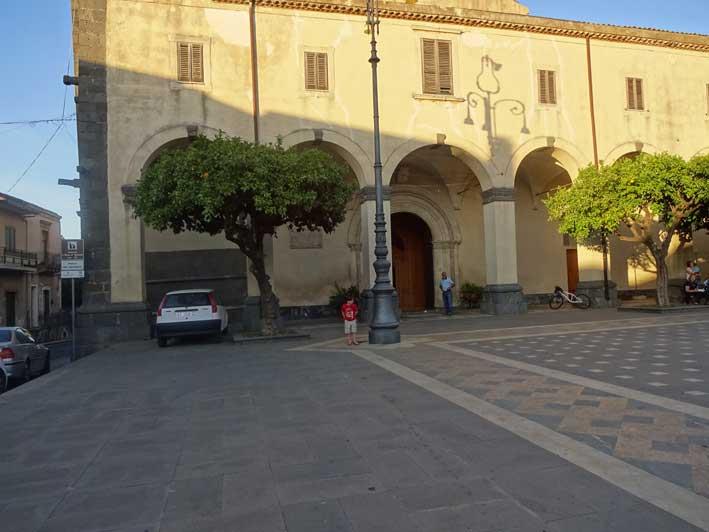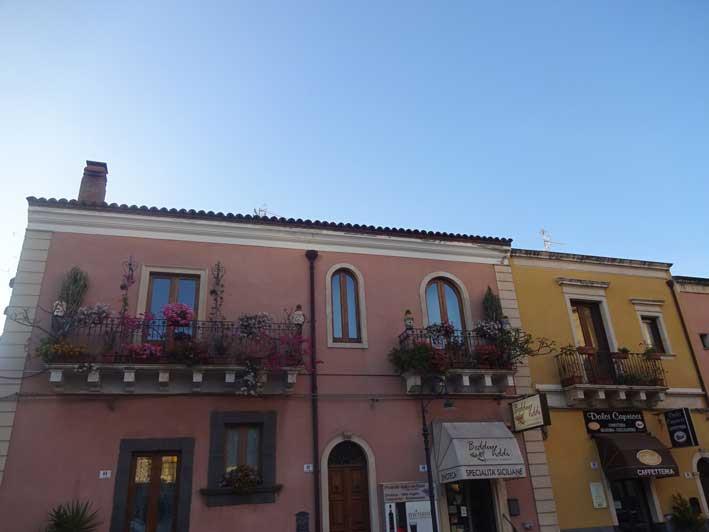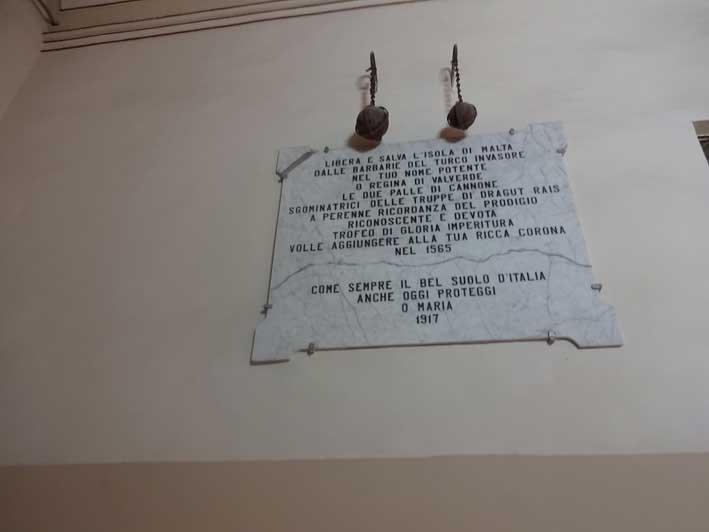The need to escape from constraints and routine and to get away to somewhere different is something we all feel, far too often in my case. So I was very happy when given instructions by my young one to block a certain part of June as we were going to Sicily.
Having over the years, organised many a holiday, I am now only too happy for them to be organised by someone else. I asked no questions. I was going to be a guest and all I had to do was pack. I did not even ask where we were staying.
We arrived in Catania, picked up the self-drive, installed the car seats for the children and our holiday started.

We dropped out suitcases at Villa del Limone, (highly recommended), and went off in search of food. I soon discovered we were in the small town of Valverde, in the shadow of Mt Etna. As I expressed my delight with: 'Goodness, how wonderful. Valverde. I can't believe it!' my fellow travellers wanted to know what I had found so thrilling about this sleepy little town. I explained that before coming, I had read an article in the Easter issue of Treasures of Malta written by Bruce Ware Allen. It was New Light on the Death of Torgut Rais. In it the author related how two of the countless spent cast iron cannonballs from the Great Siege can be found suspended from wrought iron chains at the Sanctuary of Our Lady of Valverde in Sicily. They are there, the author explains, because two natives of Valverde were among the Sicilian volunteers who joined the Knights of St John and people of Malta in resisting the Ottoman forces. "The people of Valverde have not forgotten their valiant soldiers and in 1984 commissioned several stained glass windows. One of the windows shows Grand Master de Valette and the Madonna of Valverde against a background of the Siege of Malta." At the end of my piece I had written: "Certainly a church to visit on our next trip to Sicily." Little did I know that that opportunity would arise so quickly.
So it was food first and then a visit to the Sanctuary which is on the town square. There I asked about the cannonballs and soon found them and the stained window featuring that great Grand Master de Valette.

I visited the Sanctuary three times during our holiday and it instantly became a highlight of our stay.
"It is impossible to have an idea of Italy without first seeing Sicily. The key of everything is in Sicily," Goethe wrote in 1787. "The island of light," is how Homer described Sicily in the Odyssey.
In June there is no scent of zagara or almond blossom but it is still very green and the plains are not yet burnt to burnished gold.

Like us, the Sicilians have a multi-layered history and are descendants of a mixed stock Including the Greeks, Romans and Saracens. The latter stayed long enough to create a lasting and splendid civilisation. It is the Saracens who introduced orange and lemon trees, dates, coffee and sugar cane.
Palermo was the Moorish capital and that is where you will find the Conca d'oro, literally Horn of Gold - but meaning Horn of Plenty - which has produced agricultural riches for the city of Palermo down the centuries.
The Sicilians have their own blood oranges the Sanguinella.
Sadly, the Conca d'Oro of our teenage years, between Monreale and Palermo, famous for its citrus fruit groves, has all but disappeared under the tons of cement replacing the fruit trees with ugly apartment blocks and tacky villas. What's new?
The Plain of Catania has however resisted and is still covered with vast areas of orange and lemon groves.
The history of Catania seems to identify itself with that of Mt Etna, Europe's greatest active volcano and one of the biggest in the world. It is a remarkable splendid garden: citrus orchards, olive groves, vineyards, fruit trees grow all over the slopes up to the highest reaches. Over the course of the centuries it has caused much destruction and mourning.
I never fail to be surprised when I am told that each time the survivors of some catastrophe or other, have gone back to make their homes on its slopes and to cultivate their fields.
There are many legends which relate to Mt Etna and the city of Catania. One I like involves the philosopher Empedocle who is said to have disappeared into the crater, leaving only his sandals to be found by his students on the slopes of Etna, darkened from the lava and volcanic ash: revenge for having dared to mock Etna.
My grandson after quite a long walk, came down with a ton of lava stone in his pocket which we carried back to Malta, for fear of disappointing him.
Sicily, too, has its distinguished men of letters and many of us here are acquainted with them.
Catania is the birthplace of Giovanni Verga who loved Acitrezza and immortalized it in his novel, I Malavoglia, a family saga full of misery which many of us are familiar with. His Il Mastro Don Gesualdo, is another portrait of the Sicilian style of life, its problems and its people.
Although the playwright Luigi Pirandello, a Nobel Prize winner, lived most of his life outside Sicily, he was born there.
Dacia Maraini the daughter of a Sicilian princess and a noted Florentine ethnologist came to Malta all those years ago and gave a talk at the Istituto Italiano di Cultura when only about 10 of us were in the audience. I recall the then Director of the institute in a disappointed tone commenting: "Where are the lecturers and students of Italian?" I had bought a copy of her autobiographical novel Bagheria, on that occasion. An enjoyable read.
The poet and Nobel Prize winner Salvatore Quasimodo deals with many subjects but also man's eternal dilemmas: love, sorrow, solitude and the meaning of existence.
I don't want to forget to mention Elio Vittorini, another Sicilian who became a radical anti-fascist, and whose masterpiece Conversazione in Sicilia is the story of the return to his roots.
Perhaps the most familiar and famous of Sicilian writers is Giuseppe Tomasi di Lampedusa for his slim epic, Il Gattopardo, made even more famous when it was turned into a film. "If you want things to stay as they are, things will have to change," he wrote, seeing the writing on the wall.

These are the ones that come to mind and that I am familiar with.
When it comes to music there is the Scarlatti family - many of them.
The only well known Sicilian composer I can think of is Vincenzo Bellini: Norma and La Sonnabula are probably his best known operas here. And let me not forget the more contemporary Aldo Clementi whose exercises we had to practice as youngsters.
Before leaving we had already decided to visit our old friend Lianna in Catania whom we have known since our early teens. We had lunch with her and her son and I promised to go and see her again and spend some days with her since she is now reluctant to travel.
This once vibrant and energetic woman, like me, has aged and the enthusiastic young woman of our teens and twenties is no more. Sadly. A poignant visit. Which of us will go first?
There is much we can learn from our neighbours. I want to know why we cannot decorate our balconies the way the Sicilians do. If everyone put a succulent which needs little water and attention, in a window sill or a balcony, it would change our towns and villages for the better.
Another question is why is Sicilian honey half the price of Maltese honey? I hope there is a good reason for this.
The land of the Vespers and Santa Rosalia has much to offer. In my numerous visits over the years, I have always thought so.
[email protected]